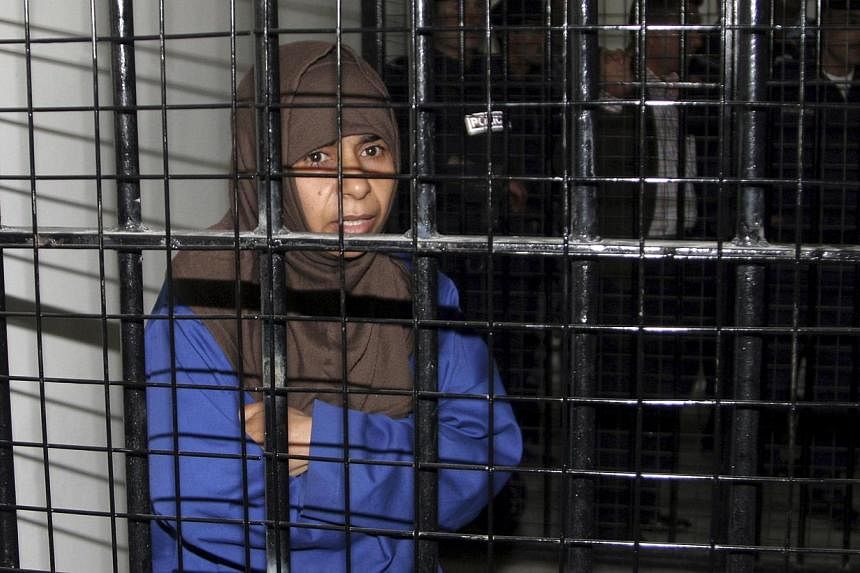The Islamic State in Iraq and Syria (ISIS) set a new deadline for Jordan to release convicted terrorist Sajida al-Rishawi, saying it would kill a Jordanian pilot it holds if the Iraqi woman is not handed over by sunset on Thursday (Jan 29) in Mosul, Iraq.
Jordan had earlier agreed to the prisoner swap but on condition that the ISIS offers proof that the pilot, Moath al-Kasassbeh, is alive.
It is not the first time a government is in negotiations with terrorists. Here are five other examples of prisoner swop:
1. US Sergeant Bowe Bergdahl

The United States' only prisoner of war was freed in Afghanistan on May 31, 2014, after Washington agreed to release five Taleban fighters held at Guantánamo Bay. Sergeant Bowe Bergdahl was captured near the Pakistani border in June 2009 and held for nearly five years. His freedom was secured after months of secret negotiations between the US and the Taleban in talks brokered by the Gulf state of Qatar.
The 28-year-old was handed over to US special forces in eastern Afghanistan and was said to be in good condition despite his years in captivity, although he struggled to speak English.
2. Israeli soldier Gilad Shalit
On Oct 18, 2011, Israel traded 1,027 Hamas prisoners for a single soldier, Gilad Shalit, who was held captive in the Gaza Strip for five years. He was seized in 2006 by Hamas militants who tunnelled into Israel.
Though the lopsided deal had strong public support amid widespread sympathy for Sergeant Shalit, senior Israeli figures urged the drafting of rules to impose strict limits and oversight for future prisoner deals. The deal subsequently opened the door to peace talks with Hamas.
3. British civilian Peter Moore
British civilian IT worker Peter Moore was released on Dec 30, 2009 by Iraqi militants after US authorities agreed to set free Qais al-Khazali, a former spokesman for influential Shi'ite cleric Moqtada al-Sadr. Moore was kidnapped in Baghdad after he and his bodyguards were ambushed by Shi'ite militiamen in 2007. Khazali was implicated in the killing of five American soldiers in Karbala.
4. Israeli soldiers Ehud Goldwasser and Eldad Regev
On July 16, 2008, Israel released Lebanese terrorist Samir al-Quntar in exchange for the bodies of soldiers Ehud Goldwasser and Eldad Regev. Quntar murdered an entire Israeli family in a 1979 brutal attack, during which he bashed the head of a four-year-old child with rocks.
The two Israeli soldiers were captured in the July 12, 2006, cross-border raid that sparked the Second Lebanon War. Prior to the swop, Israel had no concrete information on the soldiers' status and was still holding out hope that the two men would be returned alive.
Besides Quntar, Israel also set free four Hezbollah fighters and returned the bodies of some 200 others.
5. Hostages on TWA flight 847
On June 14, 1985, TWA flight 847 was en route from Athens to Rome when it was hijacked by armed Shi'ite terrorists from Hezbollah. There were 153 people on board, at least 100 of them Americans. The hijackers demanded the release of 17 members of Hezbollah and the Iraqi Islamic Daawa Party detained in Kuwait for attacks that killed six people in 1983. They also wanted the release of hundreds of Lebanese Shi'ite detainees held in jails in Israeli-occupied southern Lebanon.
The airliner was forced to fly to Beirut where 19 passengers were released in exchange for fuel, and then to Algiers where 23 more people were freed. The plane then returned to Beirut where one of the passengers, US Navy diver Robert Dean Stethem, was killed and his body dumped on the tarmac. Seven American passengers who had Jewish-sounding surnames were taken off the jet by the terrorists and sequestered in Beirut. The plane was flown to Algiers again the next day where 64 people were released, before returning to Beirut with the 39 remaining passengers.
The hostage crisis lasted a total of 17 days. The deadlock was finally broken through a series of complex political manoeuvres and the remaining hostages were eventually freed on June 30.
On July 1, Israel announced it was ready to release the Shi'ite detainees from its prisons. Over the next several weeks, it released over 700 prisoners.
SOURCE: TELEGRAPH, THE GUARDIAN, FOREIGN POLICY, BBC, LOS ANGELES TIMES

